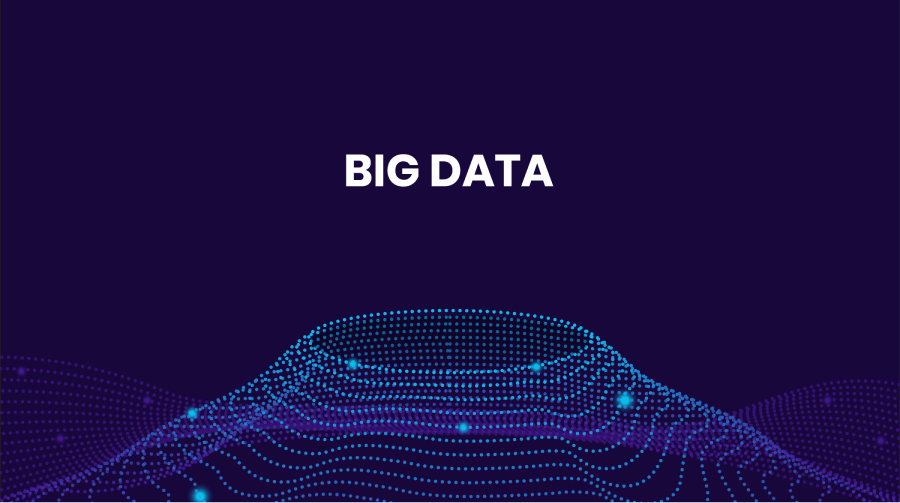
Visualizing Big Data: Challenges & Solutions
Introduction to Big Data Visualization
Definition and Importance of Big Data Visualization
'Big Data' has become more than just a buzzword in today's information-driven world. Big Data Visualization is all about converting complex data sets into visually compelling, understandable, and interactive graphics. As businesses generate vast amounts of data daily, visualizing these mountains of information is critical for decision-making processes and comprehending emerging patterns.
Evolution and Significance of Real-time Visualization
Historically, data visualization was a static representation of past data. But the dynamic nature of modern businesses and digital interactions demands real-time insights. Real-time Visualization is more than just live updates; it empowers organizations to make informed decisions instantaneously, thereby staying ahead in a competitive landscape.
The Intersection of Data Volume and Interactive Visualization
The modern world is awash with data, and the amount is increasing exponentially. Handling such immense Data Volumes requires robust tools. However, it's not just about handling data; it's about making it interactive. Interactive Visualization enables users to engage directly, allowing for tailored insights and a personalized experience.

Challenges in Big Data Visualization
Scalability Concerns in Data Representation
The growth of data brings challenges of its own. How can one depict vast amounts of information without sacrificing clarity? As datasets expand, so must the techniques and tools used to represent them. Not only should they portray data efficiently, but they also need to ensure the visuals remain insightful and actionable.
Complexity in Extracting Meaningful Insights
Every piece of data tells a story. But intertwined narratives, compounded by increasing data sources, make deriving a clear story challenging. It's paramount that tools and techniques prioritize the essence of data, ensuring simplicity in presentation while retaining depth.
Data Integration Issues and Diverse Data Sources
Gone are the days when data came from a single source. Now, it's a mosaic of social media streams, IoT devices, online transactions, and more. Merging these diverse datasets into a unified visual story requires both skill and sophisticated tools, lest we end up with a disjointed narrative.

Understanding the Core Aspects of Big Data
What is Data Volume and its Impact on Visualization
In a world defined by digital interactions, the amount of data generated is staggering. While this sea of data offers valuable insights, it also poses challenges. Large volumes can lead to congested and confusing visuals. Effective visualization should simplify this data deluge, offering clear insights without overwhelming the audience.
The Need for Advanced Visualization Tools
The sheer complexity and volume of modern data necessitate tools that are both powerful and user-friendly. Advanced Visualization Tools are no longer a luxury; they're a necessity. With AI capabilities, cloud integration, and intuitive interfaces, they're transforming the way we understand and interact with data.
Interactive Visualization: Enhancing User Experience
Traditional static charts and graphs are giving way to dynamic, interactive visual experiences. Instead of merely viewing data, users now demand engagement. Interactive Visualization bridges this gap, turning data exploration into an immersive journey, unearthing hidden insights along the way.
Solutions to Overcome Visualization Challenges
Tackling Scalability with Efficient Tools and Techniques
Modern visualization tools are built for the age of Big Data. They harness cloud computing, employ smart sampling techniques, and utilize on-the-fly aggregation. These innovations ensure that even as data scales, the visuals remain sharp, insightful, and, most importantly, useful.
Simplifying Complexity through Smart Data Representation
By focusing on essential data elements and employing techniques like clustering, hierarchical visualization, and smart color coding, we can present complex data stories simply. Such simplification ensures data remains accessible, no matter the audience's technical proficiency.
Seamless Data Integration Methods for Accurate Visualization
Proper visualization demands integrated data. With the help of advanced ETL tools and middleware solutions, data from varied sources can be cleaned, transformed, and unified. Such seamless integration ensures that the visual story remains consistent, holistic, and truthful.

The Future of Big Data Visualization
Real-time Visualization and its Growing Importance
In a world that's always on, data can't lag. Real-time Visualization will become the norm rather than the exception, with businesses demanding live insights. Such immediacy can offer unparalleled competitive advantages, from stock trading to social media trend-spotting.
Advanced Tools and Platforms on the Horizon
The visualization landscape is ever-evolving. With breakthroughs in AI, augmented reality, and quantum computing, the future of visualization is bound to be exciting. These tools won't just depict data; they'll predict, simulate, and even interact with users in revolutionary ways.
Embracing Interactive Visualization for Better Engagement
As technologies mature, expect to see a more significant fusion of AR, VR, and data visualization. Users will no longer be passive observers but active participants, navigating data landscapes, and extracting insights in ways we can only imagine now.
Conclusion
Recap of the Major Challenges and Solutions
While Big Data Visualization presents challenges – from scalability woes to integration nightmares – solutions are evolving rapidly. The journey from raw data to insightful visuals is becoming smoother, powered by innovation and technology.
The Continuous Evolution of Big Data Visualization Techniques
Data visualization is not a static field. As data grows and diversifies, visualization techniques will adapt, innovate, and evolve. Staying updated and adaptable is the key to harnessing the true power of Big Data Visualization.
References
- Smith, J., & Patel, R. (2021). Modern Challenges in Big Data Visualization. Data Science Journal, 14(2), 456-472. Available at: [www.datasciencejournal.org/article/xyz123]
- Fernandez, L. (2020). The Rise of Real-time Visualization and its Impact on Business Decision Making. Journal of Information and Data Visualization, 10(3), 189-205. Available at: [www.jidv.org/article/abc456]
- Davis, M., & Thompson, A. (2019). Interactive Visualization Techniques: A New Era of Engaging with Data. International Journal of Big Data Analysis, 8(1), 32-49. Available at: [www.ijbda.org/article/def789]
 Mark Petrenko
Mark Petrenko 
